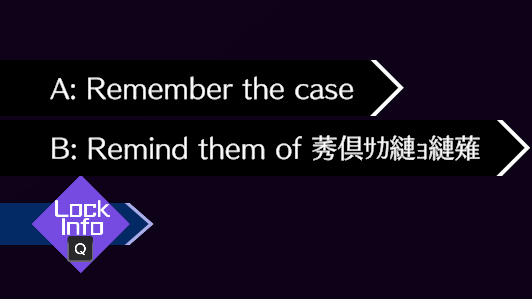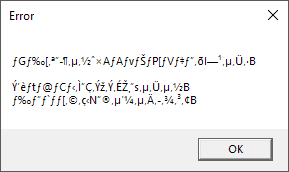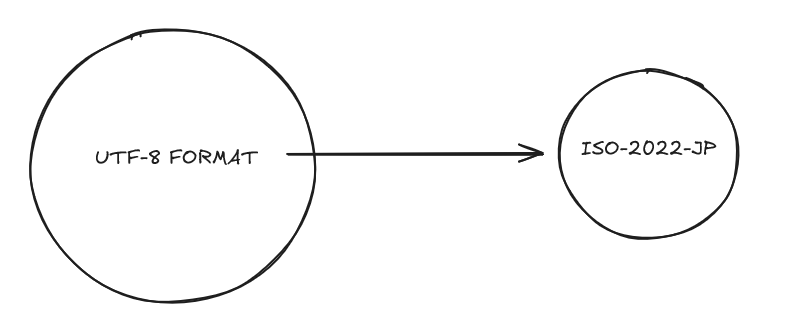Mojibake. What is it?
The cryptic text you see as a result of encoding/decoding
Ever see a bunch of garbled text on a website or in a program? Perhaps what you’re seeing is mojibake.
For the uninitiated, mojibake is the garbled text you see as a result of decoding bytes that have been encoded with a different standard. This usually results in garbled text that is unreadable or nonsensical.

AI The Sommnium Files: Nirvana Initiative, example of mojibake used in game
For any text to reach your computer screen, it must first be converted from a stream of bytes to a human-readable format.
In other words, for person A to send a message to person B, the message must be encoded by person A and then decoded by person B.
As an example, let’s encode “你好” (Hello in Simplified Chinese) into bytes using the UTF-8 encoding scheme. The result would be the following sequence of bytes (shown as HEX):
E4 BD A0 E5 A5 BDThen this sequence of bytes can be sent over the internet or stored in a file.
Now if you were to interpret these bytes as UTF-8 again when decoding, you would get the original text “你好”.
But what if you were to interpret these bytes using a different standard like big5? The result would be:
ァAヲnIt becomes a garbled mess that is far from the original text. This is mojibake.
In the early days of computing, Different encoding schemes were developed in the first place to accommodate different languages, since obviously, not all languages can be represented with the same number of characters.
These days we have more universal encoding schemes like UTF-8, which can represent every character in the Unicode standard.
The Problem
There are still many legacy programs and systems that use older encoding schemes. When data is passed between systems that use different encoding schemes, the result can be mojibake.

In the world of UTF-8, this means that the bytes are interpreted as a different character than intended. This can result in text that is unreadable or nonsensical.
This can actually mean data loss in some cases where the mismatched decoding format doesn’t have enough characters to represent the bytes uniquely.

Not all UTF-8 characters can be represented in ISO-2022-JP, so what normally ends up happening is that the character is replaced with a placeholder character such as � (NULL)
It would probably be fine if only 1 character was unreadable, but if a lot of characters are mapped to this placeholder, it can become impossible to recover the data from the mojibake since its original form has already been lost.
Example:
�乗而�����с�������������障��������
���潟�潟�若����┃絎���������������絖��������с�障����
�延根�帥���若�������333m�с����Recovery
But let’s say that we luck out and see that most of the characters in the mojibake have some form of representation after decoding. We can actually still recover the original text.
I’ll use another example from AI The Sommnium Files since I like the game so much.
迥ッ莠コ繧偵が繧ゅ>蜃コ縺輔○繝ュ We need to come up with what encoding scheme was used to initially encode the text and then what decoding scheme was used to interpret the bytes.
Often times this is a guessing game, with more experience you can make better guesses based on what mojibake characters you’re seeing.
Remember that only a subset of combinations of encoding/decoding schemes will result in readable text, so you can always assume that the format used to decode must have just as many if not more characters than the original encoding.
In this case, the text was encoded with Shift-JIS and then decoded with UTF-8. All that’s left to do is to reverse the steps.
- Encode the text with Shift-JIS
text = "迥ッ莠コ繧偵が繧ゅ>蜃コ縺輔○繝ュ"
shift_jis_bytes = text.encode("shift_jis")
hex_representation = shift_jis_bytes.hex()E7 8A AF E4 BA BA E3 82 92 E3 82 AA E3 82 82 E3 81 84 E5 87 BA E3 81 95 E3 81 9B E3 83 AD- Decode the bytes with UTF-8
hex_data = "E7 8A AF E4 BA BA E3 82 92 E3 82 AA E3 82 82 E3 81 84 E5 87 BA E3 81 9B E3 83 AD"
decoded_text = bytes.fromhex(hex_data.replace(" ", "")).decode('utf-8')犯人をオもい出せロNow we can see that the original text was “犯人を思い出せロ” (which roughly translates to “Make them remember the culprit”)
I made a quick tool for scenarios like this where you don’t know what encoding/decoding scheme was used. It’ll try some of the most common combinations and show you the results.
You can find it here
